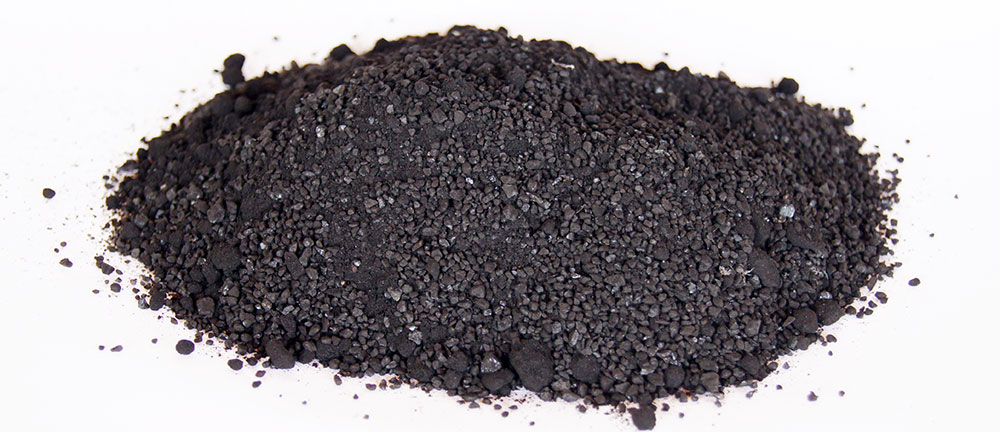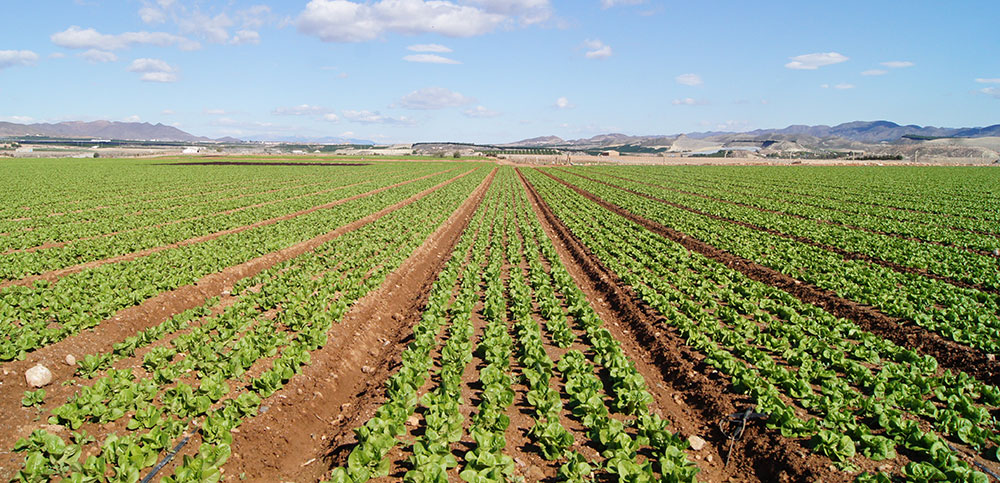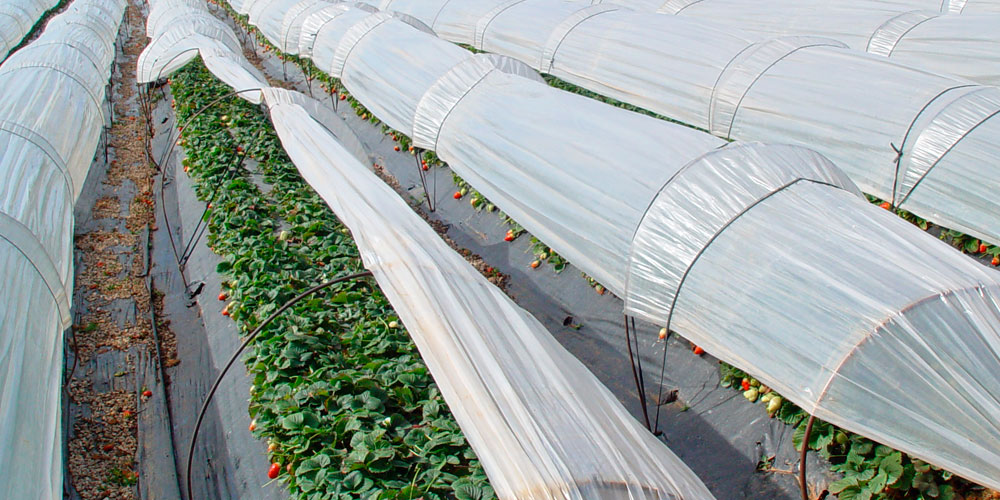Humic acids are one of the first special biostimulants used in crops to optimize their yields. Over time and as the culture of fertilization has progressed, this special agronutrient has consolidated its effectiveness to such an extent that it is currently used throughout the world and in all types of crops.
JISA has among its specialties a complete range of biostimulants with humic acids under internationally prestigious brands. In fact, it has the REACH Registration number 01-2119484861-29-0003 for humic acids.
Recently, the communication department of AEFA (Spanish Agricultural Nutrients Manufacturers Association), has conducted an interview with Mr. Gregorio Murillo, to inform in-depth understanding of this raw material in the world of fertilization. We reproduce the interview below.

AEFA interview with Mr. Gregorio Murillo Aznar on humic acids
Mr. Gregorio Murillo Aznar is an Agricultural Technical Engineer. In October 1992, he joined the company JISA, forming part of the development of the company’s entire distribution network in Spain. Since April 2006, he has held the position of Managing Director.
Dedicated for more than 30 years to the manufacture and marketing of agronutrients, biostimulants and more recently also microorganisms. Currently, its products are marketed both in the national and international market with presence in all continents.
It should be noted that JISA is a founding partner of AEFA and Mr. Gregorio Murillo have always actively participated in the association.
What is the origin of humic acids?
Humic acids, as we understand them in agriculture, encompass humic acids and fulvic acids. The origin can be diverse such as peat, vegetable remains… but most of the humic acids on the market are obtained from Leonardite, which due to its characteristics are considered the best quality and highest agronomic properties.

What is Leonardite?
Leonardite is a humified plant substance, very rich in organic matter, in an intermediate state of transformation between peat and lignite. It has its origin in the burial of plant materials for millions of years and is usually found in the upper layers of open pit mines of lignite (coal).
What are humic acids really?
Humic acids are present in soils and are the most active part of the organic matter of the same. They are a mixture of complex organic molecules that are formed by decomposition and oxidation of organic matter. Therefore, humification is a progressive process that leads to the formation of humic acids.
As we have already mentioned, when we talk about humic acids, we also include fulvic acids in this concept. The difference between them is their different behavior in basic and acidic medium. Both humic and fulvic acids are soluble in basic medium and therefore, an alkaline extractant, usually potassium hydroxide, is used to extract them in liquid form.
By introducing them in acidic medium, the humic ones precipitate by being insoluble in this medium, while the fulvic ones, remain in liquid phase to be soluble in acidic medium.
This different behavior in acidic medium is what the official method of analysis is based on to separate and quantify the humic and fulvic acids of a product.
In addition to this difference humic and fulvic acids have other chemical and behavioral differences. Humic acids have higher molecular weight than fulvic acids, greater cation exchange capacity and greater water retention capacity. Humic acids have a slower and longer-lasting action on the soil structure and on the plant, while fulvic acids have a faster but less persistent action on the plant.
What is the manufacturing process?
Humic acids are obtained by extraction in an alkaline solution of potassium hydroxide. They can also be extracted with sodium hydroxide, but while the sodium intake salinizes the soils, potassium is, along with nitrogen and phosphorus, one of the three primary nutrients essential for the development of vegetables.

What are the benefits of humic acids in soils?
Humic acids positively influence the fertility of a soil favoring microbial activity and performing various actions depending on the type of soil where we apply them.
It should be noted that this action on microorganisms also acts as a very efficient soil regenerator.
If we talk about clay soils, they help to improve the structure of the soil, improving the permeability of the soil and increasing the aeration at the root level of the plant.
In sandy soils, which usually have low levels of matter, they help to increase the cation exchange of macro and micronutrients, improve the water retention capacity and therefore avoid a loss of nutrients by leaching.
In general, the application of humic and fulvic acids in the soil, contribute to the release of nutrients and act as natural complexing agents, facilitating their assimilation in the plant.
And in the plants?
Among the beneficial effects they cause on the plant we can observe: a root increase, therefore, a greater absorption of nutrients; greater vegetative development; they favor physiological processes and contribute to a higher crop yield.
Is there a regulation for these products?
These products are included in the Spanish legislation of national fertilizers. They are considered as Special Products within group 4: Other fertilizers and special products.
According to this legislation, there are two types of humic acid products. First, those obtained by treatment of peat, leonardite or lignite with potassium hydroxide and a second type, which are the products based on humic acids obtained by treatment or processing of any of the organic amendments, of groups 6.01a, 6.01b or 6.01c. The legislation requires that they have a minimum content of a total humic extract (humic acids + fulvic acids) of 15% and a minimum content of humic acids of 7%.
In addition to the three values of total humic extract, humic acids and fulvic acids, the legislation also requires, indicating on the label the values of total nitrogen and potassium (such as K2O soluble in water) if they exceed 1%.

Are they subjected to REACH registration?
In the forum that was created after the pre-registration of humic acids as potassium humate, it was widely discussed whether it was necessary to register it or not.
Some manufacturers thought that REACH registration was not necessary under the exemption of products derived from natural polymers, while other manufacturers thought that it should be registered because, although leonardite, lignite or peat are natural products, humic acids are potassium humate and therefore a new substance.
In the end it was decided that the product had to be registered in REACH as potassium humate (humic acids, potassium salts) with EC Nº. 271-030-1; CAS Nº: 68514-28-3 and REACH Nº. 01-2119484861-29). JISA was one of the first Spanish companies to achieve REACH registration of humic acids.
Can humic acids be used as an input for organic farming?
Humic and fulvic acids were incorporated into the European regulation (Implementing Regulation 2019/2164 of December 17, 2019) as a permitted input for organic farming, they are included in Annex I of Regulation (EC) 889/2008 currently in force, as well as Leonardite, raw material from which much of the humic acids on the market come from.
How do humic acids get to the farmer?
Traditionally these products have been marketed and continue to be marketed in liquid form in different formats, from the 1 liter bottle through different containers of 5, 20 and 1,000 liters, to reach tanks of 24 tons to be applied in large farms.
For a few years they have also begun to market in solid form. To do this, once the extraction is done in potassium hydroxide solution, you have to dry the product to make it. It is then usually sold in bags of 1 and 5 kilos.
In what types of cultures can humic acids be applied?
Humic acids can be applied to all types of crops. As we have already mentioned, they influence an improvement in soil conditions and this always goes very well to the crops. Its use will ultimately be marked by the profitability of the crop. Agriculture such as intensive horticulture under greenhouses or outdoors is not the same as extensive farming. The use of humic acids is always positive but their mode of use will depend on the particular crop and state.
The highest demand for humic acids occurs in horticultural crops, strawberries and berries, as well as citrus fruits, stone fruit trees and seeds, in tropical crops such as avocado, banana, etc., also in vines and table grapes.
What is its application mode?
Humic acids are applied directly to the soil through the different irrigation systems. Generally its application is by irrigation and by sprinkler, are the two systems by which the product is best distributed in the field. It is not often applied in foliar treatments, but in some areas, technicians also recommend it.
Can you give us figures on the turnover of humic acid products?
According to our association (AEFA), all the partner companies together we market about 10 million liters of liquid humic acids per year.
The market for humic acids extends across all continents and is present in almost every agricultural market on the planet. Mainly for its proven effectiveness in improving the properties of different agricultural soils and in the conditions of different crops.
